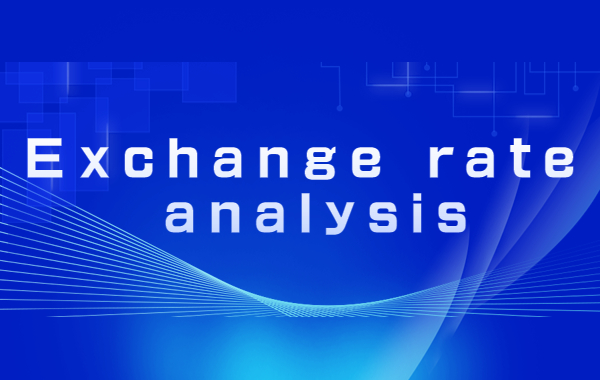RMB against a basket of currencies continued to weaken in June, within which, CFETS RMB exchange rate index fell from 98.14 at the beginning of the month to 96.74, creating a new lowest record within this year. The increase of Sino-US interest margin, seasonal demand for foreign exchange purchasing and market caution about the prospect for China’s economic recovery are the main reasons that cause the continuous decrease of RMB exchange rate.
To address the RMB exchange rate fluctuation recently, we invite the financial team of SUMEC International Technology Co., Ltd. to give a professional interpretation and analysis on the recent trend of RMB and foreign currency.
RMB
On June 20, the Central Bank dropped LPR rates of 1 year and above 5 years by 10BP, which complies with market expectation and leads to further expansion of Sino-US interest margin inversion. Seasonal foreign exchange purchase caused by enterprises’ overseas dividend also restricted the rebounding of RMB continuously. After all, the primary reason for RMB weakening lies in the economic fundamentals, which are still weak: YOY growth of economic data in May still failed to reach expectation and the domestic economy was still in the transitional phase of recovery.
Regulators begin to release the signal of stabilizing exchange rate along with the further depreciation of RMB. RMB middle rate has been stronger than market expectation for multiple times since the end of June and countercyclical adjustment of middle rate is launched formally. The determination of “avoiding great fluctuation of exchange rate” was further underlined in the Q2 2023 regular meeting of the Central Bank’s Monetary Policy Committee of Central Bank as held at the end of month.
In addition, attention has also been paid to the Central Committee’s policy for further steady economic growth on the whole market. A batch of policies and measures for continuous rise of economy were studied in the meeting of NPC Standing Committee on June 16. On the same day, National Development and Reform Commission (NDRC) also declared its efforts in formulating and promulgating policies for restoring and expanding consumption as soon as possible. The promulgation and implementation of relevant policy will increase RMB exchange rate effectively.
To sum up, we believe RMB exchange rate has basically reached the bottom, leaving a very limited space for further dropping. Optimistically, RMB exchange rate will gradually rebound with steady rise of national economy in the middle and long term.
Recent trend of foreign currency
/USD/
In June, US’s economic data mingled with both hope and fear, but pressure in inflation somewhat weakened continuously. Both CPI and PPI had YOY growth lower than the previous value: In May, QOQ CPI just increased by 0.1%, 4% higher on a YOY basis but lower than expected. PPI data fell back comprehensively. In May, the PCE price index improved by 3.8% on a YOY basis, the very first time when it dropped to a value below 4% since April 2021. Though the interest rate of USD may hike for twice this year, according to the lattice diagram of the Federal Reserve in June and Powell’s hawkish speech, if inflation data fall back further in June, there will be very limited space for USD tightening and interest rate hike of USD in this round will draw nearer.
/EUR/
Different from the US, inflation pressure in the eurozone still remains at a very high position in history. Although CPI in Eurozone dropped to low point since 2022 in June, the core CPI, which is much concerned by the European Central Bank showed a 5.4% YOY growth, higher than 5.3% of last month. An increase of core inflation may make improvement of overall inflation indicator insignificant and also leads to more continuous worries of European Central Bank on core inflationary pressure. In consideration of the above, several officers of European Central Bank expressed Hawkish speeches successively. Quindos, vice president of the European Central Bank said, “Hiking interest rate again in July is a fact”. President Lagarde also said, “If the baseline forecast of the central bank remains unchanged, we might hike interest rate again in July”. The expectation of further hiking the interest rate of EUR by 25BP has been learnt on the market. Attention should be paid to the further statement of European Central Bank after this meeting on interest hiking. If hawkish stance continues, rate hike cycle of EUR will be further extended and exchange rate of EUR will also be further supported.
/JPY/
The Bank of Japan didn’t change its existing monetary policy in June. Such a doveish attitude leads to a higher pressure of JPY depreciation. As a result, JPY continued to weaken significantly. Although Japan’s inflation is at a high historical point recently, such inflation is still far lower than that of European and American countries. As the inflation showed a weakening trend in June, it is less probable that the Bank of Japan would switch from loose to tight policy and Japan still has the pressure of interest rate decrease. However, Japan’s responsible bureau may intervene with exchange rate within a short term. On June 30, JPY exchange rate to USD exceeded 145 for the first time since last November. In last September, Japan made its first invention since 1998 to support JPY, after the JPY exchange rate to USD exceeded 145.
* The descriptions above represent the author’s personal views and are for reference only.
Post time: Jul-06-2023

